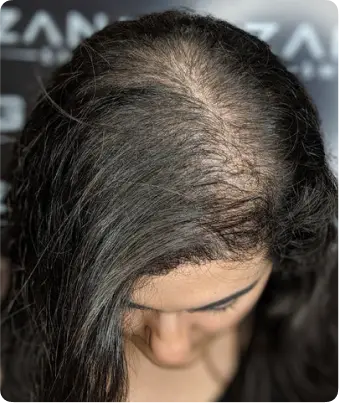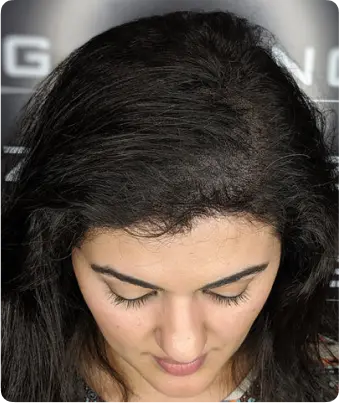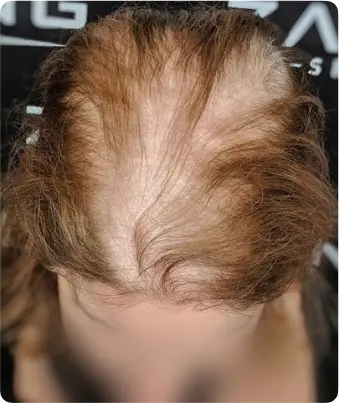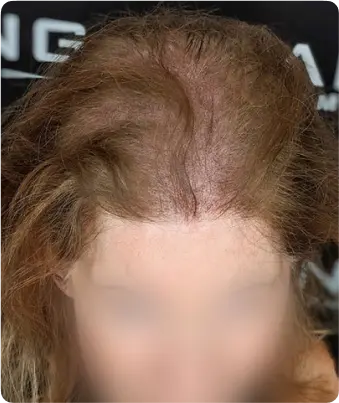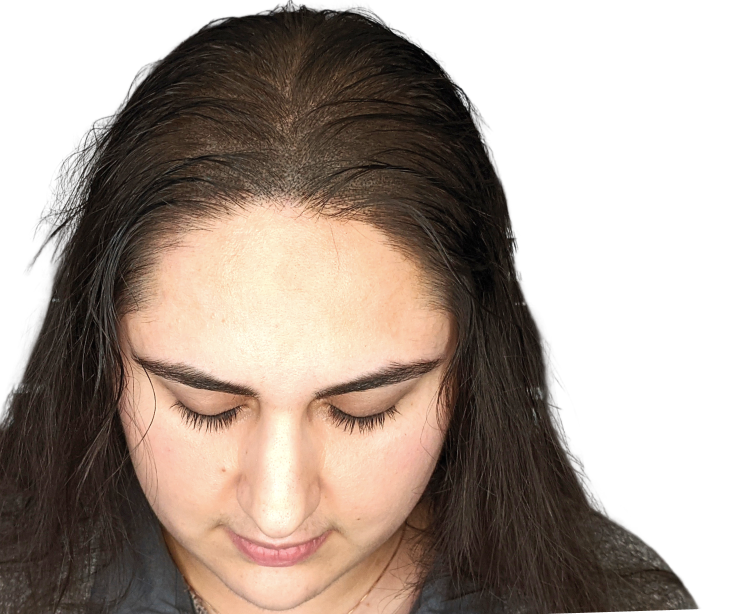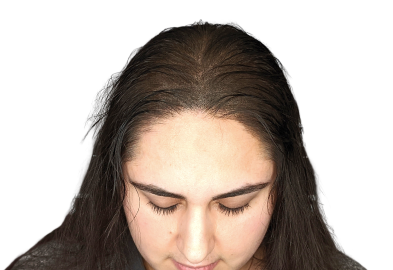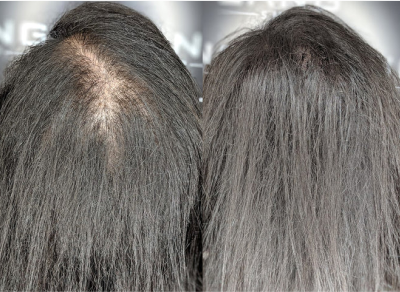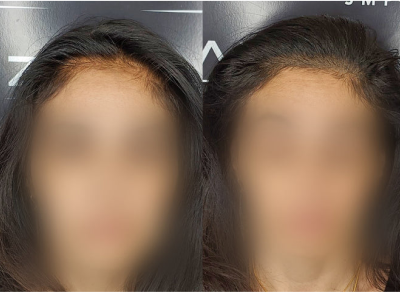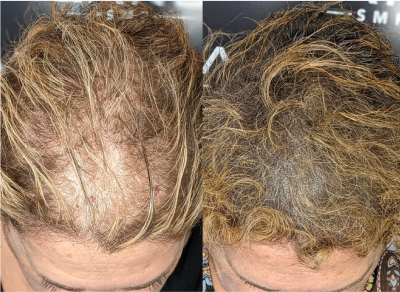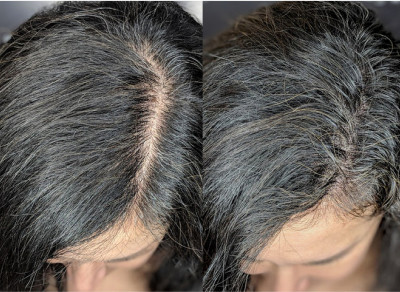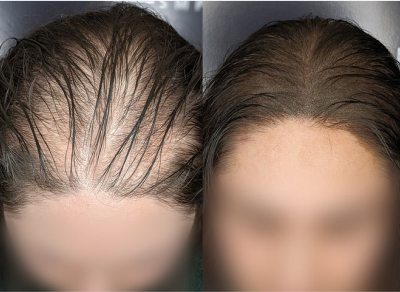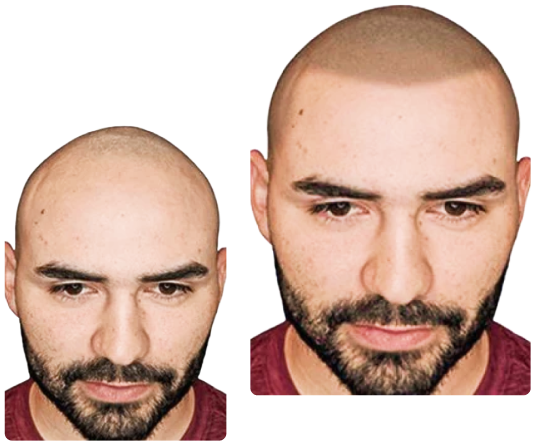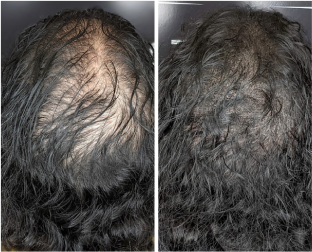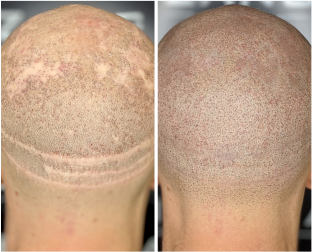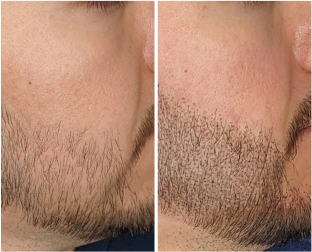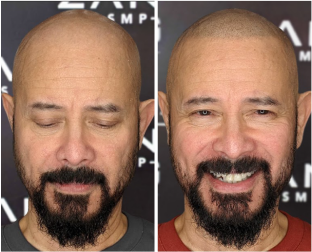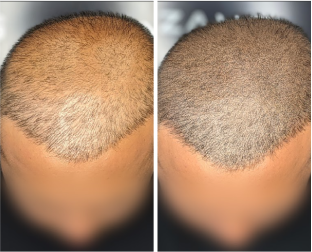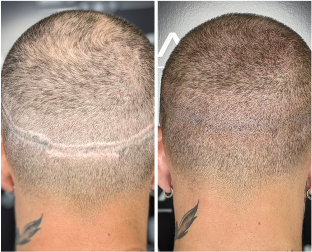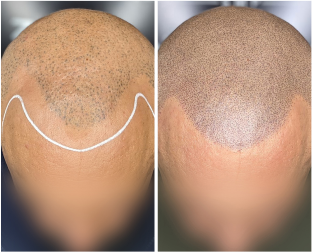Stages of Female Hair Loss
Hair loss experts use the Ludwig scale to measure female hair loss. Stage 1 shows early scalp exposure when parting hair.
Stage 2 brings increased thinning to the center, while Stage 3 spreads the thinning across the scalp. Additionally, traction alopecia from tight hairstyles can cause permanent edge hair loss.
Treatment For Female Pattern Hair Loss: Scalp Micropigmentation
Hair loss doesn’t have to hold you back. Scalp Micropigmentation (SMP) is a non-surgical, innovative way to restore confidence by addressing female pattern baldness. Using organic pigments, the technique mimics real hair follicles, instantly creating the look of denser hair—no downtime, no surgery.
At Zang SMP, we use pigments that look incredibly realistic, transforming your appearance naturally. Whether it’s covering bald spots or giving the illusion of fuller hair, SMP can help you feel like yourself again.
The process is completed in two to three sessions. The first two treatments occur about a week apart, focusing on areas affected by hair loss. A third session may follow one to three months later to enhance the final outcome.
Would a Hair Transplant Treat Hair Loss?
Hair transplants are often not the best solution for many cases of female or male pattern hair loss. These treatments require healthy donor hair grafts, which may be unavailable if thinning affects the entire scalp.
Additionally, grafts placed in areas with existing hair may damage native follicles, resulting in more noticeable hair loss.
Scalp micropigmentation (SMP) is a safe, effective alternative to surgery. This non-invasive procedure restores the look of thicker, fuller hair without damaging your existing follicles. SMP delivers immediate, natural results with no downtime.
At Zang SMP, we specialize in providing the highest-quality scalp micropigmentation. Our team of skilled professionals ensures that your results are seamless, natural-looking, and life-changing.

